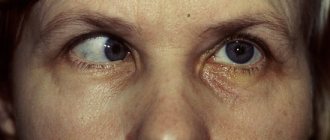Created in the middle of the last century, the tranquilizer Phenazepam has long helped to cope with mental illness, overcome fear, anxiety and panic attacks. However, this drug has many side effects; it “clouds” consciousness, provokes hallucinations and leads to the formation of severe addiction. If the dosage is violated, the drug can be not only harmful, but also dangerous. Today, this drug is practically not used in medicine; milder drugs are chosen as sedatives.
- Drug Phenazepam
- What is Phenazepam?
- Composition of Phenazepam
- Photo of the drug: what it looks like
- Effect of Phenazepam: narcotic effect
- Duration of action of Phenazepam
- Why is the drug in demand among drug addicts?
- Side effects of Phenazepam: why it’s dangerous
- Release form of Phenazepam
- Signs of using Phenazepam
- How long does Phenazepam leave the body?
- How long does it stay in the blood?
- How long does it stay in urine?
- Consequences of taking Phenazepam: effect on the body
- Phenazepam poisoning
- Weakness from use
- Reduces blood pressure
- Pregnancy and phenazepam
- How much Phenazepam can you take without getting used to it?
- Dependence on Phenazepam
- Signs of overdose
- Withdrawal from Phenazepam
- Treatment of addiction to Phenazepam
We will select an individual treatment plan
Free consultation 8-800-200-27-23
But drug addicts still “get” Phenazepam in pursuit of new sensations and fall into a strong addiction, without even thinking about how quickly the brain and nervous system are destroyed. Today, a fair number of patients in the drug treatment department of a psychiatric hospital are drug addicts on Phenazepam. Many of them have lost basic self-care skills and will never be able to get rid of mental disorders.
Drug Phenazepam
The effect of phenazepam is similar to intoxication with alcoholic drinks, so former alcoholics often switch to this drug. However, they do not think that this tranquilizer has an extremely negative effect on the nervous system and irreversible mental illness.
When you first take a psychoactive substance, a feeling of relaxation comes, relaxes the muscles, so the addict can feel lightness and serenity. The drug greatly slows down the functioning of the nervous system, so the person becomes inhibited, all reflexes are dulled, and problems arise with the perception of sounds and visual images.
What is Phenazepam?
Phenazepam is a powerful tranquilizer with a very crude effect, which has a lot of side effects and leads to the formation of severe addiction. In the mid-20th century, it was used to treat insomnia, anxiety, and as an anticonvulsant for epilepsy. It is produced in tablets or injections for intramuscular administration. The therapeutic effects of the drug are due to the effect of the active substance on benzodiazepine receptors.
The stimulating effect of the substance penetrates the reticular formation, nonspecific centers of the thalamus and the amygdala complex. The sedative effect is achieved by blocking spinal reflexes. The active substance is distributed throughout the body through the gastrointestinal tract, processed in the liver and excreted by the urinary system.
HOW TO MOTIVATE A DEPENDENT FOR TREATMENT
Composition of Phenazepam
The active component of phenazepam is bromodihydrochlorophenylbenzodiazepine .
This active substance blocks the work of many receptors and inhibits the activity of neural connections. Due to this, anti-anxiety, sedative and anticonvulsant effects are achieved. The drug has multiple contraindications and can cause addiction.
Photo of the drug: what it looks like
Effect of Phenazepam: narcotic effect
Pharmacy addicts regularly use the drug to achieve a feeling of euphoria and tranquility, but obtaining a sedative is not easy (a prescription from your doctor is required). This effect on the body is due to the fact that the active substance belongs to the group of benzodiazepines. After entering the blood, it slows down polysynaptic spinal reflexes and also minimizes the excitability of subcortical brain structures. Because of this, attacks of anxiety and aggression are reduced. But the active substance is highly addictive because it works like a drug:
Lifts your mood and eliminates anxiety. A person feels liberated and forgets about all troubles.
There is a general inhibition of all processes in the brain, so the reaction to external stimuli decreases.
The muscles relax, which leads to the elimination of physical tension. A person feels so light, as if he has returned to childhood.
Duration of action of Phenazepam
The duration of action of a tranquilizer on the body depends on the individual characteristics, form and dosage taken. If you follow medical recommendations, the sedative effect will last for 3-6 hours. A person begins to feel the effect of the tablets 15-20 minutes after taking the drug.
When Phenazepam is combined with other sedatives, alcohol and drugs, the effect of the drug is greatly enhanced and its duration increases. Even smoking has an effect on the drug, so doctors recommend limiting tobacco during treatment. All these experiments have an extremely negative impact on the functioning of the nervous system and brain, leading to mental disorders and even death in case of overdose.
Why is the drug in demand among drug addicts?
Daily use of narcotic substances depletes not only the body's reserve forces, but also the wallet. Drug addicts spend all their money buying drugs. But with constant use, they cause psychological, chemical and physiological dependence. People increase their dosage but still experience nausea, headaches, joint pain, depression and insomnia.
Side effects of Phenazepam: why it’s dangerous
You can identify a pharmacy drug addict by 5 signs:
- Unsteadiness of gait is observed. It seems as if a person is floating in space.
- There is no reaction to light. The pupils are greatly dilated. The eyes become red and itchy due to dryness.
- The epidermis acquires a bluish tint and turns pale.
- Emotional swings are very frequent. An unreasonable smile appears, which is replaced by aggression and hysteria.
- Bad breath appears due to the fact that the function of the gastrointestinal tract is disrupted and a thick layer of plaque forms on the tongue.
If a neurologist or psychotherapist has prescribed Phenazepam for you, then take it strictly according to the instructions and familiarize yourself with all the side effects and contraindications in advance. Do not increase the duration of use and dosage, because the drug is addictive and negatively affects brain function.
IMPORTANT: it is not advisable for addicted people who are in remission to take Phenazepam, since due to addiction they can take the tranquilizer in handfuls.
Dependent people tend to take tranquilizers in large quantities and mix the use of Phenazepam with alcohol or drugs.
After undergoing treatment and a rehabilitation program for addicts , a person can recover and start a new life.
Release form of Phenazepam
The drug is available in the form of tablets and injections for intramuscular and intravenous administration.
The drug was recognized as dangerous and began to be sold by prescription only recently, so it can still be found in home medicine cabinets as a remedy for insomnia. For practically healthy people (with anxiety, sleep problems, nervous tension, lower back pain) it is no longer prescribed, choosing drugs with a milder effect. Phenazepam is now used only for severe mental disorders and for the relief of seizures during epileptic seizures.
Signs of using Phenazepam
As with any other addiction, a drug addict using Phenazepam can be recognized by two physical states: intoxication and withdrawal after the drug wears off.
In a state of narcotic intoxication with a tranquilizer, the addict becomes lethargic and severely inhibited, abnormal smoothness and slowness appear in movement, speech and actions. Since the drug is used as a sleeping pill, its large dosages lead to the fact that a person can sleep for a long time and soundly.
Due to an increase in the pain threshold and blocking of receptors indicating a state of drug intoxication, a person almost does not feel pain, does not react to tastes and smells, and is not irritated by very loud sounds and harsh light. Together with the resulting hallucinations, this often leads to death. Accidents often happen to drug addicts on Phenazepam: they “go out” of the window, bleed from cuts without taking any measures, suffocate from the gas being turned on, grab onto electrical wires, etc. A sudden change in mood can lead to suicide attempts.
In general, the state of a drug addict when intoxicated with Phenazepam is extremely dangerous not only for himself, but also for the people around him, especially close relatives living with him.
Find out treatment recommendations without leaving home for free
To select a treatment plan, you just need to leave a request, we will contact you to select the time and specialist you need
Submit your application
Analogues of funds
Among the analogues of Phenzitate and Phenazepam there are drugs with the same active substance and other drugs from the group of anxiolytics:
| A drug | Compound | Price, rubles |
| Elzepam | Bromodihydrochlorophenylbenzodiazepine | 85 |
| Phenorelaxan | Bromodihydrochlorophenylbenzodiazepine | 120 |
| Diazepam | Diazepam | 320 |
| Tazepam | Oxazepam | 120 |
| Zolomax | Alprazolam | 300 |
The drugs should not be taken together with other drugs with the same effect. If possible, benzodiazepines should be replaced with more modern anxiolytics due to their dangers and side effects.
How long does Phenazepam leave the body?
Even after the body is freed from the effects of the drug, metabolic products remain in the blood - metabolites, similar to those that remain after taking most drugs. They remain in cells and organs for up to 72 hours. The exact time for withdrawal of the drug from the body depends on the dosage of the drug, duration of administration and individual psychophysiological characteristics.
Active metabolites remaining in the body after taking a tranquilizer can still interact with alcohol or sedatives, so their use within 3-4 days after stopping Phenazepam is strictly prohibited. Even glycine can cause negative consequences.
How long does it stay in the blood?
The medicine stays in the blood for quite a long time, but its amount decreases by 2 times every 12 hours. On average, complete release of the body from Phenazepam occurs three days after taking it. During this time, you should not drive vehicles or do work that requires concentration. When tested for drugs, the drug will show a positive result throughout this period.
How long does it stay in urine?
The active substance of the drug is not soluble in water, so it remains in the body until it binds and forms soluble salts. After taking Phenazepam, a urine drug test may show up to 11 different metabolites.
Half of the substance taken is excreted through the kidneys during the first day. But the remaining metabolites remain in the body much longer and can be contained in the urine for the next 3-4 days. With regular use of the drug, the elimination period can reach 8-10 days.
DRUG ADDICTION TREATMENT in MOSCOW
Application procedure
The medicine should be taken strictly in accordance with the dosage regimen - it is eliminated slowly and can cause serious consequences. With a moderate overdose, side effects increase; with a severe overdose, consciousness is depressed, and the activity of the heart and lungs may stop. The lethal dose is 0.5 mg/kg body weight for an adult, 0.25 mg for a child. The order of therapy is as follows:
- single dose - 0.5-1 mg, daily dose - up to 1.5-5 mg in 2-3 doses;
- It is better to drink 0.5-1 mg in the morning, the same amount during the day, at night - about 2.5 mg;
- maximum dose per day is 10 mg, this amount of medication is taken only under the supervision of a doctor;
- for insomnia, take the drug once before bed (half an hour before) 0.5 mg.
The drugs have poor compatibility with alcohol; joint use is prohibited. The duration of treatment without the risk of developing addiction is 14 days; according to indications, the course can be 60 days. Cancellation is carried out gradually, reducing the dose.
Consequences of taking Phenazepam: effect on the body
When taking large doses of the drug, Phenazepam changes a person’s consciousness, destroying his brain and nervous system and leading to serious mental disorders.
All internal organs of the patient are exposed to intoxication. Exceeding the dose leads to depletion of all systems, severe forms of poisoning and even death. Libido and potency decrease. When the drug is discontinued, psychological withdrawal, convulsions, insomnia, nausea and constant panic attacks occur. Such patients often experience suicidal thoughts.
Withdrawal syndrome (withdrawal)
Withdrawal syndrome is a severe psychosomatic condition that occurs after stopping taking Phenazepam or reducing the consumed dose.
On the part of the internal organs, vegetative disorders predominate:
- hypotension;
- fluctuations in body temperature;
- hyperhidrosis;
- lack of appetite, nausea, vomiting;
- trembling of limbs;
- difficulty speaking.
From the psycho-emotional sphere:
- depression;
- anxiety, irritability, turning into aggressiveness;
- severe sleep disorders;
- increased sensitivity to loud sounds, strong odors, photophobia.
2-3 days after discontinuation of the drug, fibrillary twitching of individual muscle groups begins, and generalized convulsions may develop. The development of psychosis is possible. The duration of withdrawal syndrome in case of dependence on Phenazepam is about a month. After which lethargy, weakness, physical and mental exhaustion sets in.
How to ease withdrawal symptoms
Treatment of withdrawal syndrome should be carried out in a hospital, under the supervision of specialists; if acute conditions arise during treatment, intensive care and resuscitation measures are used.
The drug is withdrawn gradually under the supervision of a doctor.
After complete withdrawal of the drug, a course of detoxification therapy is carried out. Non-drug treatment:
- gastric lavage;
- enterosorbents (Enterosgel, Smecta);
- saline laxatives.
For withdrawal symptoms caused by Phenazepam, drug detoxification is the only effective and safe method. Large volumes of liquid (saline, glucose, rheopolyglucin) are injected intravenously, and diuretics are prescribed for forced diuresis. Very carefully monitor the amount of fluid introduced and removed. The state of acid-base and water-salt balance is constantly monitored.
If necessary, additional hardware detoxification is carried out. All patients are prescribed treatment aimed at maintaining vital systems and organs (β-blockers, cardiac glycosides, hepatoprotectors, vitamin therapy).
Phenazepam poisoning
Drug addicts who take tranquilizers live on average no more than 3-4 years. As the dosage increases, the allotted time is greatly reduced. With constant exposure to large dosages of the drug on the cerebral cortex, irreversible changes occur in it. Therefore, many phenazepam drug addicts end up in psychiatric clinics and remain incapacitated for the rest of their lives.
Poisoning of liver cells by metabolites formed when using the drug leads to the death of entire sections of the organ. Cirrhosis of the liver often develops with pronounced liver failure.
The drug also leads to kidney disease, causing kidney failure. With decompensation in the work of these two organs, death occurs, which even timely medical care cannot prevent.
Weakness from use
The drug has a strong depressant effect on the nervous system, leading to insomnia, drowsiness, fatigue, weakness and dizziness, severe headaches, weakened attention and memory, confusion, problems with coordination and orientation in space, convulsions and sudden mood swings. With prolonged use, hallucinations occur and a coma may occur.
Reduces blood pressure
The drug slows down all processes in the body, leading to a decrease in blood pressure and slower blood flow. This “sedative” effect leads to metabolic processes being disrupted, cells begin to starve, and blood vessels narrow.
Pregnancy and phenazepam
Treatment with phenazepam is strictly prohibited for pregnant and lactating women, since the active substance easily penetrates the placenta and breast milk and leads to destruction of the baby’s nervous system and brain. Even in cases of extreme necessity (epileptic seizures, psychosis), doctors choose analogues with a milder effect, for example, clonazepam or fluoxetine. In a desperate situation, when a woman’s life depends on the drug, it is used, but it is recommended to terminate the pregnancy.
In the course of ongoing research, it was scientifically proven that the drug provokes the development of congenital anomalies, such as cleft palate and cerebral palsy. Stillbirths and miscarriages are possible.
Indications of medications
Fenzitate and Phenazepam have the same indications for use. Most often, diseases and conditions for which you need to take these medications are associated with various psychopathy, neuroses and neurosis-like conditions, which are accompanied by a number of symptoms:
- excessive suspiciousness;
- obsessive thoughts;
- panic;
- anxiety;
- causeless fear;
- increased irritability;
- state of tension;
- excitement;
- mood swings.
Drugs can be given to reduce the effects of prolonged stress when it is not possible to cope with the problem on your own. What else do pills help with? Indications also include different types of sleep disorders - poor falling asleep, changes in sleep phases, early awakening.
Drugs can help with some phobias, as well as with reactive psychosis.
Both medications are indicated for seizures of various origins. To relax muscles, they are prescribed for certain types of epilepsy, tics, muscle rigidity, and hyperkinesis. The tablet is given once to patients before anesthesia to relieve anxiety.
In complex treatment, they are given to people with schizophrenia, but we must remember that Phenazepam and Fenzitate do not affect delusions, hallucinations and other similar symptoms.
Dependence on Phenazepam
The addiction is so strong that in order to get a new dose, a person is ready to deceive loved ones, steal and even use violence against relatives and strangers.
Signs of overdose
The clinical picture of an overdose depends on the amount of the substance consumed, duration of use and psychophysiological characteristics.
Mild overdose may cause fatigue, drowsiness, tinnitus, and confusion. Usually this condition goes unnoticed by others, the person copes with it on his own.
The following symptoms are typical for an average overdose:
- Recession of the tongue and impaired swallowing reflex;
- Constriction of the pupils “to a point”, lack of light reaction;
- When exposed to the cornea, blinking does not occur.
In case of an overdose, a person may fall into a superficial coma with loss of consciousness and erratic actions in response to painful stimuli. In this case, it is important to call an ambulance as soon as possible, and before it arrives, lay the person on his side and open the vomit so that he does not choke on the vomit.
A severe overdose of phenazepam can lead to the following consequences:
- agony,
- the pressure will drop to critical,
- breathing disorder,
- pulse quickens,
- critical decrease in temperature,
- wide pupils,
- deep coma.
In the event of a severe overdose, the patient can only be saved by timely intensive therapy.
Withdrawal from Phenazepam
The peculiarity of all tranquilizers is that if they are abruptly withdrawn, they can provoke serious mental disorders. Even with a decrease in the dosage of Phenazepam, the patient suffers from insomnia, feels constant anxiety, and panic attacks appear. Avoiding the hairdryer provokes nervous tics; a person can become aggressive, or, conversely, show complete apathy and indifference to everything that is happening.
Withdrawal occurs within a day after using the drug and can last up to two weeks.
REMOVAL AT HOME











